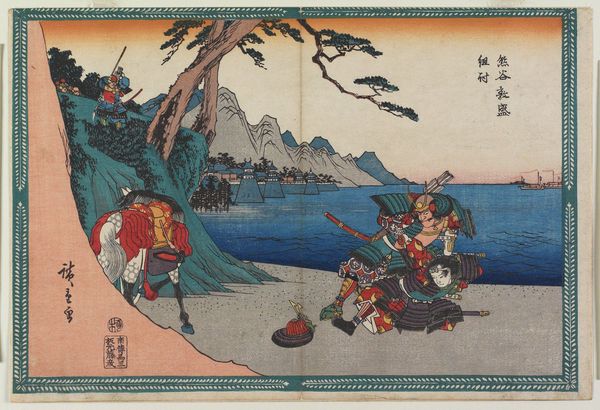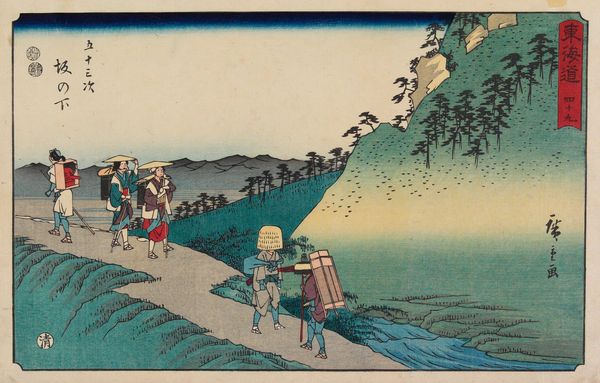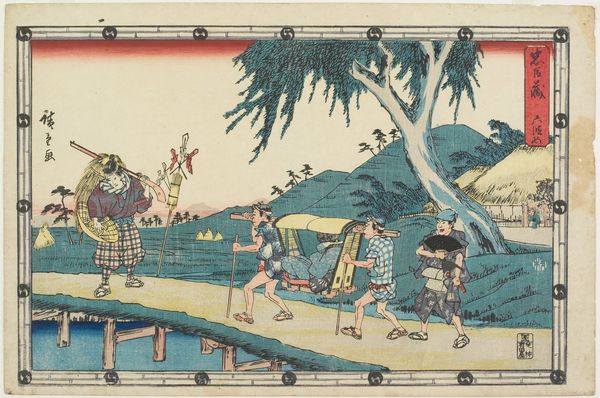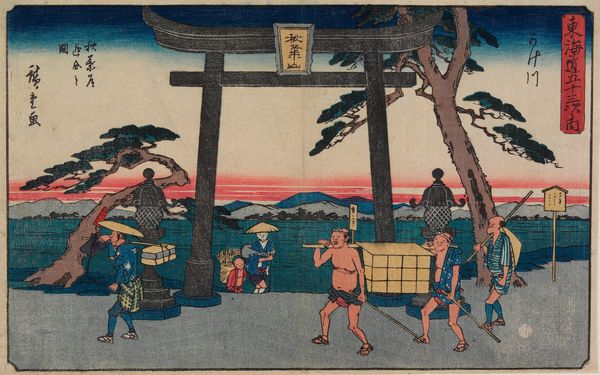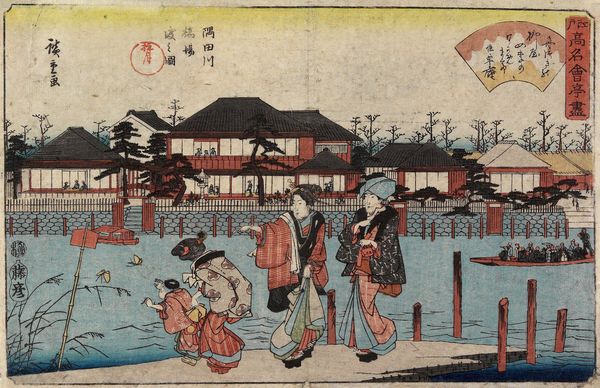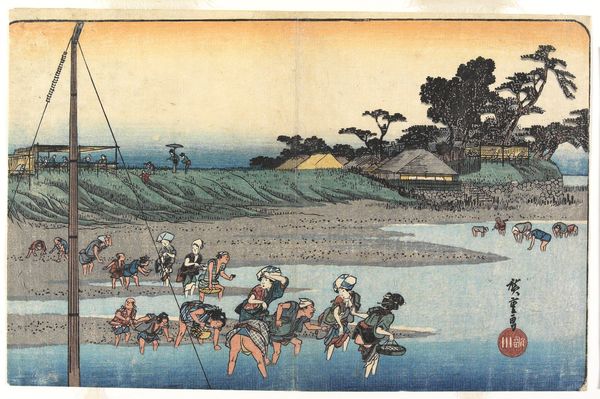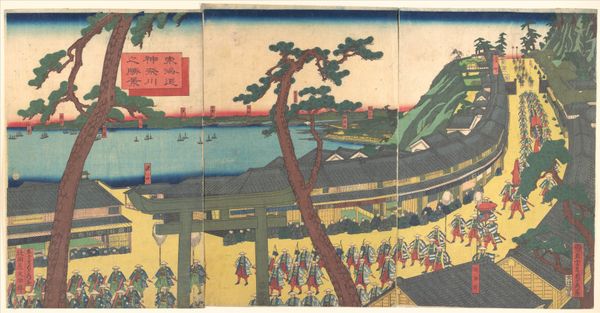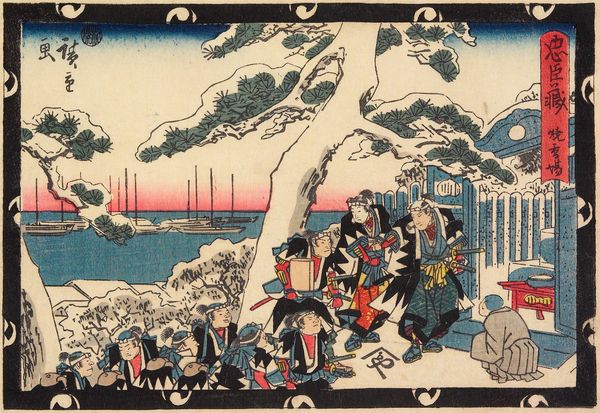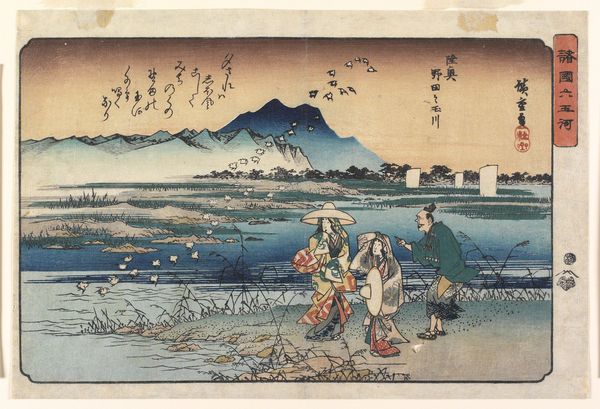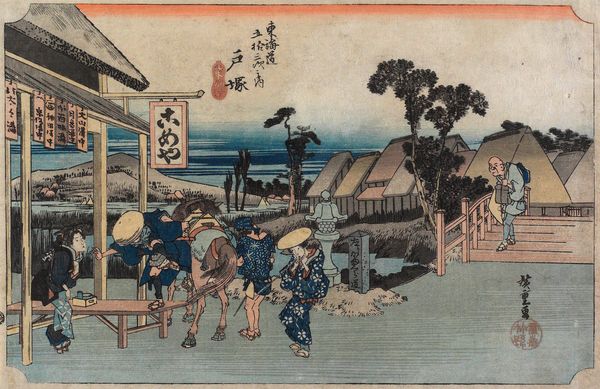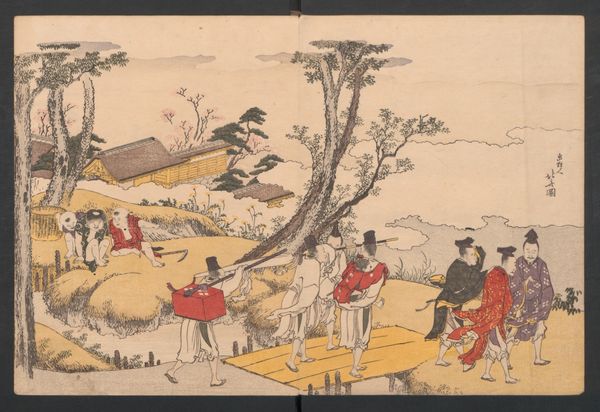
Dimensions: 8 7/16 x 13 5/8 in. (21.5 x 34.6 cm) (image)9 5/16 x 14 1/4 in. (23.7 x 36.2 cm) (sheet)
Copyright: Public Domain
Curator: It's striking, isn't it? I’m immediately drawn into the energy of the procession and the faces peering from under the trees. Editor: I agree. There's a festive yet grounded feel to it, a combination that is very potent here. Curator: Indeed. This woodblock print, known as "No. Yoshida," comes to us from the hand of Utagawa Hiroshige. Created sometime between 1847 and 1852, it is a captivating example of Ukiyo-e artistry housed right here at the Minneapolis Institute of Art. Editor: Looking at the composition, I’m struck by how Hiroshige uses perspective. The crowd on the hill is above eye level while figures down front give a sense of immediate activity. It feels performative. I also love how he renders light reflecting on those perfectly round paper lanterns. Curator: The lanterns certainly play a pivotal role. They are visual cues suggesting celebration and perhaps spiritual significance. Lanterns in Japanese culture have long served as guides in darkness, both literally and metaphorically, often appearing at festivals and religious events to light pathways and ward off evil. Here, they illuminate a pathway of communal experience. Editor: I wonder, what are they celebrating, or observing? To me, it feels deeply connected to seasonal shifts or perhaps the remembrance of ancestors. Look at the attentive posture of all those people under the trees—the piece itself creates a sort of symbolic bridge between lived life and something more ancestral. Curator: That’s a perceptive observation. I find it interesting how he positions the onlookers, partially hidden but wholly engaged. Editor: Exactly! It's like looking at a family photograph where some are caught mid-laugh, and others look posed but aren't. There’s something genuinely alive in this depiction of Yoshida. What strikes you most about its lasting resonance? Curator: The scene holds so much human warmth, like holding a shared cultural memory that you didn’t know you had. And that memory transcends time through its representation of ritual. Editor: It's a vibrant portal. I leave with a new understanding of collective memory and experience. Thank you.
Comments
No comments
Be the first to comment and join the conversation on the ultimate creative platform.
